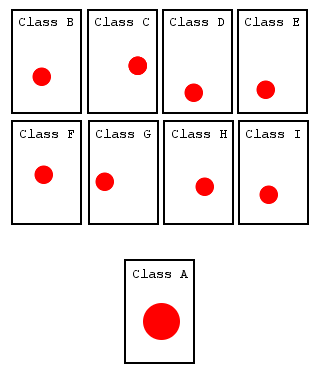Related Research Articles

Martin Fowler is a British software developer, author and international public speaker on software development, specialising in object-oriented analysis and design, UML, patterns, and agile software development methodologies, including extreme programming.
In computer programming and software design, code refactoring is the process of restructuring existing computer code—changing the factoring—without changing its external behavior. Refactoring is intended to improve the design, structure, and/or implementation of the software, while preserving its functionality. Potential advantages of refactoring may include improved code readability and reduced complexity; these can improve the source code's maintainability and create a simpler, cleaner, or more expressive internal architecture or object model to improve extensibility. Another potential goal for refactoring is improved performance; software engineers face an ongoing challenge to write programs that perform faster or use less memory.

Design Patterns: Elements of Reusable Object-Oriented Software (1994) is a software engineering book describing software design patterns. The book was written by Erich Gamma, Richard Helm, Ralph Johnson, and John Vlissides, with a foreword by Grady Booch. The book is divided into two parts, with the first two chapters exploring the capabilities and pitfalls of object-oriented programming, and the remaining chapters describing 23 classic software design patterns. The book includes examples in C++ and Smalltalk.
In computer programming, a code smell is any characteristic in the source code of a program that possibly indicates a deeper problem. Determining what is and is not a code smell is subjective, and varies by language, developer, and development methodology.
Copy-and-paste programming, sometimes referred to as just pasting, is the production of highly repetitive computer programming code, as produced by copy and paste operations. It is primarily a pejorative term; those who use the term are often implying a lack of programming competence. It may also be the result of technology limitations as subroutines or libraries would normally be used instead. However, there are occasions when copy-and-paste programming is considered acceptable or necessary, such as for boilerplate, loop unrolling, or certain programming idioms, and it is supported by some source code editors in the form of snippets.
Test-driven development (TDD) is a software development process relying on software requirements being converted to test cases before software is fully developed, and tracking all software development by repeatedly testing the software against all test cases. This is as opposed to software being developed first and test cases created later.
The Software Peter principle is used in software engineering to describe a dying project which has become too complex to be understood even by its own developers.
In computer programming, Intentional Programming is a programming paradigm developed by Charles Simonyi that encodes in software source code the precise intention which programmers have in mind when conceiving their work. By using the appropriate level of abstraction at which the programmer is thinking, creating and maintaining computer programs become easier. By separating the concerns for intentions and how they are being operated upon, the software becomes more modular and allows for more reusable software code.
In object-oriented design, the dependency inversion principle is a specific methodology for loosely coupled software modules. When following this principle, the conventional dependency relationships established from high-level, policy-setting modules to low-level, dependency modules are reversed, thus rendering high-level modules independent of the low-level module implementation details. The principle states:
"Don't repeat yourself" (DRY) is a principle of software development aimed at reducing repetition of information which is likely to change, replacing it with abstractions that are less likely to change, or using data normalization which avoids redundancy in the first place.
Extreme programming (XP) is an agile software development methodology used to implement software projects. This article details the practices used in this methodology. Extreme programming has 12 practices, grouped into four areas, derived from the best practices of software engineering.
In computer programming, duplicate code is a sequence of source code that occurs more than once, either within a program or across different programs owned or maintained by the same entity. Duplicate code is generally considered undesirable for a number of reasons. A minimum requirement is usually applied to the quantity of code that must appear in a sequence for it to be considered duplicate rather than coincidentally similar. Sequences of duplicate code are sometimes known as code clones or just clones, the automated process of finding duplications in source code is called clone detection.
The anemic domain model is described as a programming anti-pattern where the domain objects contain little or no business logic like validations, calculations, rules, and so forth. The business logic is thus baked into the architecture of the program itself, making refactoring and maintenance more difficult and time-consuming.
Coding conventions are a set of guidelines for a specific programming language that recommend programming style, practices, and methods for each aspect of a program written in that language. These conventions usually cover file organization, indentation, comments, declarations, statements, white space, naming conventions, programming practices, programming principles, programming rules of thumb, architectural best practices, etc. These are guidelines for software structural quality. Software programmers are highly recommended to follow these guidelines to help improve the readability of their source code and make software maintenance easier. Coding conventions are only applicable to the human maintainers and peer reviewers of a software project. Conventions may be formalized in a documented set of rules that an entire team or company follows, or may be as informal as the habitual coding practices of an individual. Coding conventions are not enforced by compilers.
In object-oriented computer programming, a null object is an object with no referenced value or with defined neutral (null) behavior. The null object design pattern, which describes the uses of such objects and their behavior, was first published as "Void Value" and later in the Pattern Languages of Program Design book series as "Null Object".
In software development, or any other IT field technical debt is the implied cost of future reworking required when choosing an easy but limited solution instead of a better approach that could take more time.

Shotgun surgery is an antipattern in software development and occurs where a developer adds features to an application codebase which span a multiplicity of implementors or implementations in a single change. This is common practice in many programming scenarios, as a great amount of programming effort is usually expended on adding new features to increase the value of programming assets. As a consequence, these new features may require adding code in several places simultaneously where the code itself looks very similar and may only have slight variations. Owing to the fast-paced nature of commercial software development, there may not be sufficient time to remodel a system to support the new features trivially. As a consequence, the practice of copy-and-paste programming is prevalent; the code is written in a single place then simply copied to all other places where that implementation is required.
In software engineering and programming language theory, the abstraction principle is a basic dictum that aims to reduce duplication of information in a program whenever practical by making use of abstractions provided by the programming language or software libraries. The principle is sometimes stated as a recommendation to the programmer, but sometimes stated as a requirement of the programming language, assuming it is self-understood why abstractions are desirable to use. The origins of the principle are uncertain; it has been reinvented a number of times, sometimes under a different name, with slight variations.

Extreme programming (XP) is a software development methodology intended to improve software quality and responsiveness to changing customer requirements. As a type of agile software development, it advocates frequent releases in short development cycles, intended to improve productivity and introduce checkpoints at which new customer requirements can be adopted.
In computer programming, design smells are "structures in the design that indicate violation of fundamental design principles and negatively impact design quality". The origin of the term "design smell" can be traced to the term "code smell" which was featured in the book Refactoring: Improving the Design of Existing Code by Martin Fowler.
References
- ↑ Martin Fowler; Kent Beck; John Brant; William Opdyke; Don Roberts (1999). Refactoring: Improving the Design of Existing Code . Addison-Wesley Professional. ISBN 978-0201485677.
- ↑ Sandi Metz, "The Wrong Abstraction" (2016)